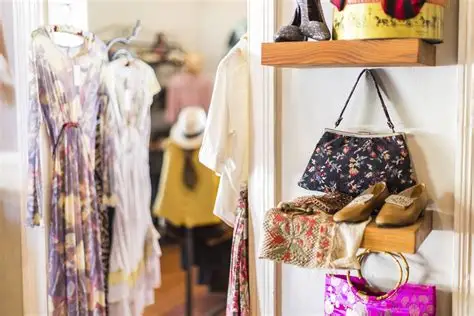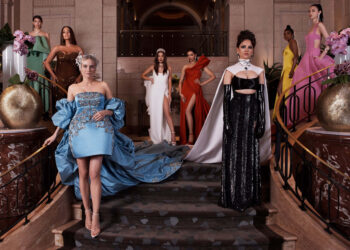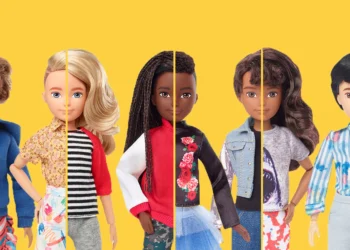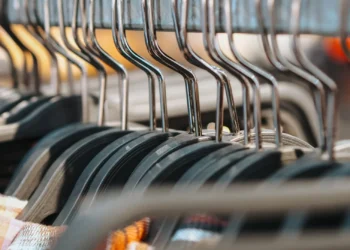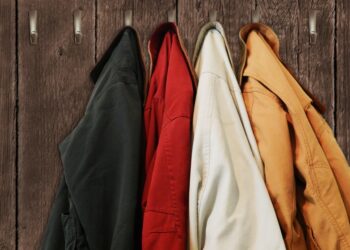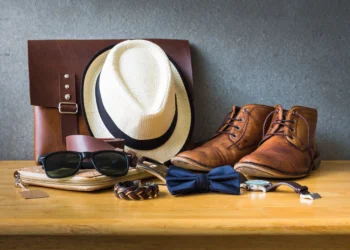Rediscovering Retro: How Vintage Fashion Became a Modern Staple
Explore the revival of vintage fashion and its increasing relevance in today’s sustainable and style-conscious world.
1. The Rise of Secondhand Chic
Vintage and secondhand fashion has transitioned from a niche market to a mainstream trend, particularly in Europe. This shift is largely fueled by the rise of digital resale platforms, making unique retro pieces more accessible than ever. The appeal isn’t just about style; it’s also about sustainability, with many consumers looking to reduce their environmental footprint by choosing pre-owned clothing.
2. Youthful Drivers of Change
Younger generations, particularly post-millennials, are at the forefront of this vintage revolution. They see secondhand shopping not only as a way to express their individuality but also as a conscious choice that aligns with their values. This demographic shift is reshaping the fashion industry, pushing brands to reconsider their approach to production and consumption.
3. Urban Fashion Hubs Lead the Way
Major cities like London are becoming epicenters for secondhand apparel transactions. These cities, known for their fashion-forward environments, act as cultural hubs where vintage fashion thrives. The concentration of fashion-conscious individuals in these areas helps drive the demand for unique, pre-owned items, further solidifying vintage fashion’s place in the modern wardrobe.
4. Economic Growth and Environmental Awareness
The secondhand goods market is experiencing double-digit growth, reflecting a broader trend of heightened environmental awareness and a desire for affordable fashion. Consumers are increasingly seeking out vintage pieces that offer both value and style.
Thrift Store Treasures: Unearthing Timeless Pieces with a 70s Twist
Discover the allure of thrift stores as we explore the growing trend of vintage fashion, focusing on how economic shifts and sustainability concerns drive the popularity of thrifting.
1. The Rise of Thrifting
In an era defined by economic uncertainty and a growing awareness of environmental issues, thrifting has surged in popularity. More and more consumers, especially younger generations, are turning to thrift stores as a viable alternative to fast fashion. This shift reflects not only a desire for affordability but also a commitment to sustainable practices.
2. Economic Impact and Growth
The thrift store industry in the United States is experiencing significant growth, with revenue projected to reach $14.1 billion in 2025. This growth is supported by a steady compound annual growth rate (CAGR) over the past five years, indicating a sustained interest in secondhand shopping.
3. Online Thrifting Trends
The digital marketplace has also embraced the thrifting movement, with online platforms like Depop and Poshmark gaining traction. These platforms cater to consumers seeking unique vintage finds, including those with a retro ’70s flair, further expanding the reach and appeal of thrift fashion. The average online thrift spending per user in the US reflects this growing trend.
4. Shifting Consumer Attitudes
The increasing popularity of thrift stores signals a broader shift in consumer attitudes toward consumption. People are beginning to value unique, pre-owned items over mass-produced goods, contributing to the circular fashion system. The following data highlights key metrics in the thrift store market:
| Metric | Value (2025) | Unit |
|---|---|---|
| US Thrift Store Revenue | $14.1 | Billion USD |
| US Thrift Store CAGR (last 5 years) | 5.8 | % |
| Online thrift spending per user in US | $788.38 | USD |
| Number of thrift stores in the United States | 28,849 | Stores |
| Share of secondhand market: traditional thrift | $24 (48%) | Billion USD (%) |
| Share of secondhand market: resale platforms | $26 (52%) | Billion USD (%) |
| Percent of all clothing sales from secondhand | >9 | % |
Data source: IBISWorld “Thrift Stores in the US – Market Research Report” & ElectroIQ “Thrifting Statistics By Market, Consumer And Facts” July 2025
From Nostalgia to Necessity: The Eco-Friendly Side of Second-Hand Style
Explore how vintage fashion transcends mere nostalgia, evolving into an eco-conscious choice driven by a desire for sustainability and unique self-expression.
1. The Rise of Second-Hand Apparel
The second-hand apparel market is booming, fueled by a growing awareness of environmental issues and changing consumer habits, particularly among Gen Z and Millennials. By the end of 2025, this market is projected to hit nearly $48.3 billion, showing how much consumers value sustainability. This shift highlights that eco-friendliness is becoming a mainstream trend, not just a niche interest.
2. Economic and Environmental Drivers
A significant portion of apparel budgets in the US and UK is now allocated to second-hand items, and this trend is expected to continue, especially if new clothing prices rise due to tariffs. This economic consideration, combined with the environmental benefits of reducing waste and lowering the demand for new production, makes vintage fashion both a stylish and responsible choice.
3. Social and Technological Influences
Social media trends, luxury brands partnering with resale platforms, and technological advancements like AI-driven resale experiences are further boosting the popularity of vintage fashion. These factors are making it easier and more appealing for consumers to participate in the second-hand market.
4. Sustainable Fashion Growth
The global sustainable fashion market is experiencing significant growth, with projections indicating a strong upward trend. The following table illustrates the growth of sustainable fashion sales and the second-hand apparel market:
| Metric | 2024 | 2025 (Proj.) | CAGR (2025–32) |
|---|---|---|---|
| Global sustainable fashion sales | $12.5B | $13.9B | 23% |
| Second-hand apparel market | $43.5B | $48.3B | 11% |
Data source: Whole People “Sustainable Fashion Guide” July 4, 2025
As you can see, both sustainable fashion sales and the second-hand apparel market are expected to grow substantially, with particularly strong growth projected for global sustainable fashion sales. This data underscores the increasing importance of sustainable practices in the fashion industry.
Antique Accessories Unveiled: Adding A Touch of Yesterday to Today’s Wardrobe
Discover how antique accessories are making a stylish comeback, blending history with modern fashion sensibilities.
1. The Allure of Vintage Accessories
In 2025, the vintage fashion scene is experiencing a surge in popularity, particularly when it comes to antique accessories. It’s not just about old items; it’s about owning a piece of history that tells a story. These accessories appeal to a wide range of consumers, from seasoned vintage enthusiasts to younger generations seeking unique and sustainable fashion choices.
2. Factors Driving Demand
Several factors contribute to the high demand for vintage clothing and accessories. The rarity of these items plays a significant role, as many are no longer in production. The craftsmanship of older pieces, often superior to modern mass-produced items, is also highly valued. Finally, there’s the nostalgia factor – these accessories evoke memories of bygone eras, adding a touch of romance and history to any outfit.
3. The Rise of Sustainable Fashion
Antique accessories offer a sustainable alternative to fast fashion. By choosing vintage, consumers can reduce their environmental impact and support a circular economy. Pieces like retro handbags and evening bags from iconic periods are not only stylish but also represent a conscious choice to avoid contributing to the waste and ethical concerns associated with modern fashion production.
4. What Makes an Accessory Desirable?
The desirability of an antique accessory hinges on several key factors. Authenticity is paramount; buyers want to be sure they’re getting the real deal. Condition is also crucial, as well-maintained pieces command higher prices. Provenance, or the history of the item, adds to its appeal, especially if it has a connection to a notable person or event. Ultimately, the story behind the accessory is what captivates buyers.
Crafting Your Own Vintage Vibe: Tips for Infusing Retro Charm into Everyday Outfits
Discover how to blend vintage and modern styles for a unique, sustainable, and personalized fashion statement in 2025.
1. Embrace the Eclectic Mix
Forget rigid adherence to a single era; the modern vintage aesthetic is all about blending different periods and styles. Think about pairing those retro wide-leg pants you found at a flea market with a contemporary, minimalist top. Or, consider wearing a classic floral dress as part of your everyday ensemble. The key is to not be afraid to experiment and create a look that’s uniquely you.
2. Highlight Imperfections and Timeworn Details
In 2025, the beauty of vintage lies in its imperfections. Instead of seeking out pristine, museum-quality pieces, embrace the character that comes with age. A slightly faded print, a small repair, or a unique patina can add depth and authenticity to your outfit. These details tell a story and make your style more personal and engaging.
3. Sustainable and Stylish Choices
One of the most appealing aspects of vintage fashion is its inherent sustainability. By sourcing secondhand clothing and accessories, you’re actively reducing waste and participating in a more circular economy. Plus, you’re likely to find unique items that you wouldn’t find in mainstream retail stores, adding to the individuality of your style.
4. Key Trends to Watch
Keep an eye out for the resurgence of classic trends. Animal prints are making a comeback as sophisticated staples, and silk ties are being reimagined in fashion-forward ways. Accessories like cloche hats are also returning, offering both practicality and a touch of nostalgic flair. Incorporating these elements can add a playful yet timeless feel to your wardrobe.
Q&A
Question 1: What are the key factors driving the resurgence of vintage fashion in the modern era?
Answer: Several factors contribute to vintage fashion’s popularity. The rise of digital resale platforms increases accessibility. Younger generations see it as a way to express individuality and align with sustainable values. Major cities act as fashion hubs driving demand. Finally, economic considerations (affordability) and heightened environmental awareness contribute to its growth.
Question 2: How is the secondhand goods market performing, and what are the projected growth rates?
Answer: The secondhand goods market is experiencing significant double-digit growth. In the UK, the market is projected to be worth $38.4 billion in 2025, with a Compound Annual Growth Rate (CAGR) of 11.3% from 2025-2035. Other European countries show similar strong growth projections, though specific values are not provided for France, Germany, Italy, and Spain. In the US, the thrift store market is projected to reach $14.1 billion in 2025, with a 5.8% CAGR over the past five years. The overall secondhand market (including resale platforms) shows a significant percentage of total clothing sales.
Question 3: How are mainstream retailers and brands responding to the growing popularity of vintage and secondhand fashion?
Answer: Mainstream retailers are increasingly integrating vintage styles and collaborating with resale platforms. Brands are embracing circular economy principles, extending the lifespan of garments, and catering to the demand for sustainable fashion choices. This suggests that vintage is not a fleeting trend but a significant part of the future of fashion.
Question 4: What are some key differences between thrifting and buying vintage from other sources (like online resale platforms)?
Answer: While both contribute to the secondhand market, thrift stores offer a more traditional, in-person shopping experience, while online platforms like Depop and Poshmark provide broader access to unique vintage finds and cater to a specific online community. The data provided shows that in the US, traditional thrift stores and resale platforms each command roughly half of the secondhand market share.

